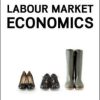Test Bank for Organizational Behavior: Bridging Science and Practice Version 3.0
$35.00 Original price was: $35.00.$26.50Current price is: $26.50.
Test Bank for Organizational Behavior: Bridging Science and Practice Version 3.0
Test Bank for Organizational Behavior: Bridging Science and Practice Version 3.0

Product details:
- ISBN-10 : 1453391975
- ISBN-13 : 978-1453391976
- Author: Talya Bauer; Berrin Erdogan
When purchased from FlatWorld (the publisher), this Color Print Textbook includes Online Access, Quizzes, Flashcards and Homework (if professor uses Homework system). Online textbook is accessible. By expertly weaving together the equally important strands of management theory and practice, Organizational Behavior: Bridging Science and Practice provides students with the key vocabulary, conceptual frameworks, and critical thinking skills necessary to diagnose work-based interactions, ask pertinent questions, evaluate gathered data, and act in an effective and ethical manner regardless of situational characteristics.
Table contents:
- Chapter 1: Organizational Behavior
- 1.1: Employee Engagement in Organizational Change Toward B Corp Status: The Case of Townshend’s Te
- 1.2: Understanding Organizational Behavior
- About This Book
- What Is Organizational Behavior?
- Why Organizational Behavior Matters
- Adding to Your OB Toolbox
- Isn’t OB Just Common Sense?
- 1.3: Learning and Retention
- Learning and Retaining Information
- Learning Style Preferences
- Internships as Learning Opportunities
- 1.4: Organizational Behavior Research Methods
- Research Concepts, Tools, and Approaches
- Surveys
- Field Studies
- Laboratory Studies
- Case Studies
- Meta-Analysis
- Machine Learning
- Measurement Issues in OB
- Analytics
- 1.5: Trends Influencing Organizational Behavior
- Challenges and Opportunities
- Ethical Challenges
- Online Data Privacy Concerns
- Lack of Employee Engagement
- Technology: Processing Power, Billions of Emails, and Automation
- Uneven Information Quality
- Sustainability and Green Business Practices
- Aging Workforce
- The Global Marketplace for Staffing
- 1.6: Maintaining a Customer Service Culture: The Case of Les Schwab Tires
- 1.7: Conclusion
- 1.8: Exercises
- Endnotes
- Chapter 2: Diversity in the Workplace
- 2.1: Equality as a Core Value: The Case of Salesforce.com
- 2.2: Demographic Diversity
- Benefits of Diversity and Inclusion
- Higher Creativity in Decision Making
- Better Understanding and Service of Customers
- More Satisfied Workforce
- Higher Stock Prices
- Lower Litigation Expenses
- Higher Company Performance
- Challenges of Diversity
- Similarity-Attraction Phenomenon
- Faultlines
- Stereotypes and Unconscious Biases
- Specific Diversity Issues
- Gender Diversity in the Workplace
- Earnings Gap
- Glass Ceiling
- Sexual Harassment
- Race Diversity in the Workplace
- Age Diversity in the Workplace
- Religious Diversity in the Workplace
- Employees with Disabilities in the Workplace
- Sexual Orientation Diversity in the Workplace
- Suggestions for Managing Demographic Diversity
- Build an Inclusive Culture
- Make Managers Accountable for Diversity
- Diversity Training Programs
- Review Recruitment Practices
- Affirmative Action Programs
- 2.3: Cultural Diversity
- Individualism-Collectivism
- Power Distance
- Uncertainty Avoidance
- Aggressive-Nurturing (Masculinity–Femininity)
- Suggestions for Managing Cultural Diversity
- Help Employees Build Cultural Intelligence
- Avoid Ethnocentrism
- Listen to Locals
- Recognize That Culture Changes
- Do Not Always Assume That Culture Is the Problem
- 2.4: The Role of Ethics and National Culture
- Diversity and Ethics
- Diversity Around the Globe
- 2.5: Managing Diversity for Success: The Case of IBM
- 2.6: Conclusion
- 2.7: Exercises
- Endnotes
- Chapter 3: Understanding People at Work: Individual Differences and Perception
- 3.1: Hiring for Match: The Case of Netflix
- 3.2: The Interactionist Perspective: The Role of Fit
- 3.3: Individual Differences: Values and Personality
- Values
- Personality
- Big Five Personality Traits
- Myers-Briggs Type Indicator
- Positive and Negative Affectivity
- Self-Monitoring
- Proactive Personality
- Self-Esteem
- Self-Efficacy
- Locus of Control
- Personality Testing in Employee Selection
- 3.4: Perception
- Visual Perception
- Self-Perception
- Social Perception
- Attributions
- 3.5: The Role of Ethics and National Culture
- Individual Differences and Ethics
- Individual Differences Around the Globe
- 3.6: Using Big Data to Match Applicants to Jobs: The Case of Cornerstone OnDemand
- 3.7: Conclusion
- 3.8: Exercises
- Endnotes
- Chapter 4: Individual Attitudes and Behaviors
- 4.1: Fostering Positive Job Attitudes and Professional Development: The Case of Enterprise Holding
- 4.2: Work Attitudes
- What Causes Positive Work Attitudes?
- Personality
- Person–Environment Fit
- Job Characteristics
- Psychological Contract
- Organizational Justice
- Relationships at Work
- Stress
- Work-Life Balance
- Consequences of Positive Work Attitudes
- Assessing Work Attitudes in the Workplace
- 4.3: Work Behaviors
- Job Performance
- What Are the Major Predictors of Job Performance?
- Organizational Citizenship Behaviors
- Absenteeism
- Turnover
- 4.4: The Role of Ethics and National Culture
- Job Attitudes, Behaviors, and Ethics
- Job Attitudes Around the Globe
- 4.5: People Come First: The Case of SAS
- 4.6: Conclusion
- 4.7: Exercises
- Endnotes
- Chapter 5: Theories of Motivation
- 5.1: Creating Happiness Through Motivation: The Case of The Walt Disney Company
- 5.2: Need-Based Theories of Motivation
- Maslow’s Hierarchy of Needs
- ERG Theory
- Two-Factor Theory
- Acquired-Needs Theory
- 5.3: Process-Based Theories
- Equity Theory
- What Are Inputs and Outcomes?
- Who Is the Referent?
- Reactions to Unfairness
- Overpayment Inequity
- Individual Differences in Reactions to Inequity
- Fairness Beyond Equity: Procedural and Interactional Justice
- Expectancy Theory
- Influencing Expectancy Perceptions
- Influencing Instrumentality Perceptions
- Influencing Valence
- Reinforcement Theory
- Reinforcement Interventions
- Reinforcement Schedules
- 5.4: The Role of Ethics and National Culture
- Motivation and Ethics
- Motivation Around the Globe
- 5.5: A Motivating Place to Work: The Case of Zappos
- 5.6: Conclusion
- 5.7: Exercises
- Endnotes
- Chapter 6: Designing a Motivating Work Environment
- 6.1: Retail with a Purpose: The Case of REI
- 6.2: Motivating Employees Through Job Design
- Importance of Job Design
- Scientific Management and Job Specialization
- Alternatives to Job Specialization
- Job Characteristics Model
- Empowerment
- 6.3: Motivating Employees Through Goal Setting
- Goal-Setting Theory
- Setting SMART Goals
- Specific and Measurable
- Aggressive
- Realistic
- Time-Bound
- Why Do SMART Goals Motivate?
- When Are Goals More Effective?
- Feedback
- Ability
- Goal Commitment
- Are There Downsides to Goal Setting?
- Ensuring Goal Alignment Through Management by Objectives (MBO)
- 6.4: Motivating Employees Through Performance Appraisals
- What Is Performance Management?
- What Is the Purpose of a Performance Appraisal?
- Who Is the Rater?
- What Makes an Effective Appraisal System?
- Absolute Rating versus Relative Ranking Appraisals
- Conducting the Appraisal Meeting
- Managing Potential Bias in Performance Appraisals
- Liking
- Leniency
- Stereotypes
- 6.5: Motivating Employees Through Performance Incentives
- Performance Incentives
- Piece Rate Systems
- Individual Bonuses
- Merit Pay
- Sales Commissions
- Employee Recognition Awards
- Team Bonuses
- Gainsharing
- Profit Sharing
- Stock Options
- 6.6: The Role of Ethics and National Culture
- Designing a Motivating Work Environment and Ethics
- Designing a Motivating Work Environment Around the Globe
- 6.7: Motivating Steel Workers Works: The Case of Nucor
- 6.8: Conclusion
- 6.9: Exercises
- Endnotes
- Chapter 7: Managing Stress and Emotions
- 7.1: Managing Stress and Emotions: The Case of NASA’s Mission to Mars
- 7.2: What Is Stress?
- Models of Stress
- General Adaptation Syndrome
- Demand-Control Model
- Job Demands-Resources (JD-R) Model
- Causes of Stress at Work
- Role Demands
- Information Overload
- Work-Life Conflict
- Interpersonal Stressors
- Life Changes
- Unemployment and Job Insecurity
- Organizational Change
- Anticipatory Stress and Rumination
- Outcomes of Stress
- Physiological
- Psychological
- Work Outcomes
- Individual Differences in Experienced Stress
- 7.3: Managing Stress
- Individual Approaches to Managing Stress
- The Corporate Athlete
- Flow
- Diet
People also search:
organizational behavior version 3.0 by talya bauer and berrin erdogan
organizational behavior bridging science and practice version 3.0 pdf
|
organizational behavior movies
organizational behavior classes
organizational behavior degree programs
|
Related products
Test Bank
Test Bank for Clinical Immunology and Serology A Laboratory Perspective, 3rd Edition: Stevens











